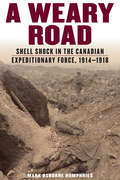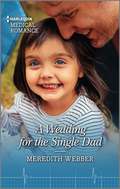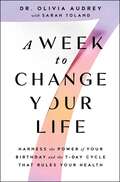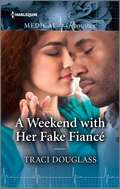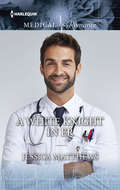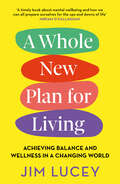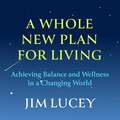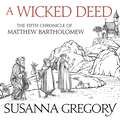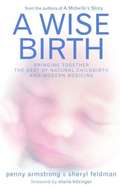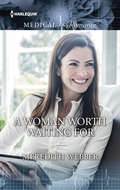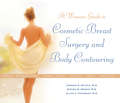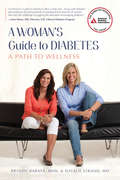- Table View
- List View
A Weary Road: Shell Shock in the Canadian Expeditionary Force, 1914-1918
by Mark Osborne Humphries<p>More than 16,000 Canadian soldiers suffered from shell shock during the Great War of 1914 to 1918. Despite significant interest from historians, we still know relatively little about how it was experienced, diagnosed, treated, and managed in the frontline trenches in the Canadian and British forces. <p>How did soldiers relate to suffering comrades? Did large numbers of shell shock cases affect the outcome of important battles? Was frontline psychiatric treatment as effective as many experts claimed after the war? Were Canadians treated any differently than other Commonwealth soldiers? A Weary Road is the first comprehensive study to address these important questions. Author Mark Osborne Humphries uses research from Canadian, British, and Australian archives, including hundreds of newly available hospital records and patient medical files, to provide a history of war trauma as it was experienced, treated, and managed by ordinary soldiers.</p>
A Wedding for the Single Dad: A Wedding For The Single Dad / Reunited With Her Daredevil Doc (Mills And Boon Medical Ser. #1)
by Meredith WebberWill the GP and the vet……say “I do”?Crashing an ultralight, in the middle of the bush, was not part of the plan for vet Campbell. Neither was being rescued by local GP Lauren! The pull Campbell feels to Lauren is unrivaled…and, as they get to know each other under the starlit Australian sky, he finds himself wanting more. But with a bruised heart and a daughter to think of, love can’t be in the cards, can it?From Harlequin Medical: Life and love in the world of modern medicine.
A Wedding in the Village
by Abigail GordonThe doctor's longed-for-bride When Dr Megan Marshall returns home to head up the Riverside Practice she's not expecting a blast from her past! Her new colleague is gorgeous Luke Anderson--her tutor at university. Megan still blushes remembering the Valentine's card she sent him! Megan always stood out for Luke, but as his student she was out of bounds. Now they're working together, can Luke forget his painful past and capture Megan's heart? Because the longer Luke spends with Megan, the more determined he is to make her his bride! Previously Published.
A Week to Change Your Life: Harness the Power of Your Birthday and the 7-Day Cycle That Rules Your Health
by Dr Olivia AudreyRenowned naturopathic doctor to the stars shares a &“perfect roadmap&” (Dr. Mike Moreno, New York Times bestselling author of The 17 Day Diet book series) to the life-changing seven-day plan personalized to you and your birthday that can radically improve your health and well-being.Do you regularly get the Monday Blues? Are you always tired on Fridays, even though you want to be excited for the weekend? There may be more to it than just a long work week. Over the course of a week, the human body goes through a cycle of self-regulation. Our energy levels, inflammation levels, capacity to focus, and even our immunity all fluctuate naturally based on this internal seven-day cycle, scientifically known as the circaseptan rhythm. Now, Dr. Olivia Audrey reveals how we can tap into the power of this seven-day cycle to transform our health and overhaul our mind and mood. The key to understanding your own circaseptan rhythm is, remarkably, from the day of the week on which you were born. The birth experience is like a hormonal storm that inflames the body, one that is repeated week after week with an ebb and flow of inflammation and repair that lasts seven days. This cycle has a measurable impact on mood, energy, and all the facets of physical health. Dr. Audrey&’s protocol provides instructions for aligning your health goals with your body&’s natural circaseptan rhythm, unlocking extraordinary benefits. With her accessible writing and actionable advice, Dr. Audrey reveals the secret to harnessing your body&’s natural rhythm in order to heal whatever ails you and boost how you look, feel, and live. This plan can be effective for losing weight, gaining focus, fighting specific diseases, or simply feeling more in tune with your life. A Week to Change Your Life is the ultimate program to &“show us a different way of looking at the problems, reminding us to keep practicing and to feel joy,&” (Sarah Ferguson, Duchess of York) so you can create a life of radiant health and energy.
A Weekend with Her Fake Fiancé (Harlequin Lp Medical Ser.)
by Traci DouglassCould her temporary fiancé……become her husband for life?To secure the job of her dreams, midwife Carmen Sanchez needs a fiancé, and fast! Paramedic Zac Taylor should be the last man she asks—there’s nothing fake about the attraction between them! Yet while lone wolf Zac might not be interested in forever, he pulls out all the stops to play fiancé of the year—and their make-believe engagement starts to feel all too real…“Finding Her Forever Family is a stellar medical romance. The characters are memorable and the plot complex. I did not want this book to end. Highly recommend it!”—Goodreads“One Night with the Army Doc by Traci Douglass is a medical contemporary romance which thoroughly entertains and leaves you with that HEA glow. I found this to be a romance that you will want to read in one sitting, because you will not want to put it down.”—Goodreads
A White Knight in ER
by Jessica MatthewsRescued by a playboy… ER nurse Megan Erickson needs all the support she can get after a broken engagement and becoming a mother to her brother's young children.The attention of ER physician Jonas Taylor, with his rootless existence and a playboy's reputation, is the last thing she needs. When an accident in ER has serious implications for Megan, Jonas reveals himself as her knight in shining armor. Megan would love to rest permanently on this rock and seek passion in his arms — if only she could persuade this restless rescuer to stay and claim this family for his own….
A White Wind Blew
by James Markert"A compelling and thought-provoking novel that will move and inspire readers of all kinds." -John Burnham Schwartz, author of Reservation Road When the body fails, you've got two choices. Send a doctor in, or send a prayer up. And if neither works? You'll find Dr. Wolfgang Pike at his piano. Music has always been Wolfgang's refuge. It's betraying him now, as he struggles to compose a requiem for his late wife, but surely the right ending will come to him. Certainly it'll come more quickly than a cure for his patients up at Waverly Hills, the tuberculosis hospital, where nearly a body an hour leaves in a coffin. Wolfgang can't seem to save anyone these days, least of all himself. Sometimes we just need to know we're not the only ones in the fight. A former concert pianist checks in, triggering something deep inside Wolfgang, and spreading from patient to patient. Soon Wolfgang finds himself in the center of an orchestra that won't give up, with music that won't stop. A White Wind Blew delivers a sweeping crescendo of hope in a time of despair, raising compelling questions about faith and confession, music and medicine,and the undying force of love.
A Whole New Life: An Illness and a Healing
by Reynolds PriceReynolds Price has long been one of America's most acclaimed and accomplished men of letters -- the author of novels, stories, poems, essays, plays, and a memoir. In A Whole New Life, however, he steps from behind that roster of achievements to present us with a more personal story, a narrative as intimate and compelling as any work of the imagination.In 1984, a large cancer was discovered in his spinal cord ("The tumor was pencil-thick and gray-colored, ten inches long from my neck-hair downward"). Here, for the first time, Price recounts without self-pity what became a long struggle to withstand and recover from this appalling, if all too common, affliction (one American in three will experience some from of cancer). He charts the first puzzling symptoms; the urgent surgery that fails to remove the growth and the radiation that temporarily arrests it (but hurries his loss of control of his lower body); the occasionally comic trials of rehab; the steady rise of severe pain and reliance on drugs; two further radical surgeries; the sustaining force of a certain religious vision; an eventual discovery of help from biofeedback and hypnosis; and the miraculous return of his powers as a writer in a new, active life.Beyond the particulars of pain and mortal illness, larger concerns surface here -- a determination to get on with the human interaction that is so much a part of this writer's much-loved work, the gratitude he feels toward kin and friends and some (though by no means all) doctors, the return to his prolific work, and the "now appalling, now astonishing grace of God."A Whole New Life offers more than the portrait of one brave person in tribulation; it offers honest insight, realistic encouragement and inspiration to others who suffer the bafflement of catastrophic illness or who know someone who does or will.
A Whole New Plan for Living: Achieving Balance and Wellness in a Changing World
by Jim Lucey'A timely book about mental wellbeing and how we can all prepare ourselves for the ups and downs of life' Miriam O'Callaghan'Jim Lucey has put all his experience into this book. It will empower you to update your strategy for a healthy and fulfilling life' Adam ClaytonWe will all experience times in our lives when our health is challenged. As we navigate an uncertain world, stressors such as financial worries, illness, loss, isolation and loneliness can turn into distress, anxiety and depression. In A Whole New Plan for Living, leading psychiatrist Prof Jim Lucey presents ten powerful steps to show us how, by maintaining balance and wellness in our daily lives we can achieve overall health and wellbeing, ready for the challenges life presents to us. From understanding wellness, to managing stress and distress, to the opportunity for mental health recovery no matter the circumstances, A Whole New Plan for Living shows us how by making small changes, we can achieve optimum mental health, become more resilient and live with hope for the future.
A Whole New Plan for Living: Achieving Balance and Wellness in a Changing World
by Jim LuceyThe comprehensive and powerful new book from renowned psychiatrist Jim Lucey.We will all experience times in our lives when our health is challenged. As we navigate an uncertain world, stressors such as financial worries, illness, loss, isolation and loneliness can turn into distress, anxiety and depression. In A Whole New Plan for Living, leading psychiatrist Prof Jim Lucey presents ten powerful steps to show us how, by maintaining balance and wellness in our daily lives we can achieve overall health and wellbeing, ready for the challenges life presents to us. From understanding wellness, to managing stress and distress, to the opportunity for mental health recovery no matter the circumstances, A Whole New Plan for Living shows us how by making small changes, we can achieve optimum mental health, become more resilient and live with hope for the future.(P)2021 Hachette Books Ireland
A Whole New Plan for Living: Achieving Balance and Wellness in a Changing World
by Jim LuceyThe comprehensive and powerful new book from renowned psychiatrist Jim Lucey.We will all experience times in our lives when our health is challenged. As we navigate an uncertain world, stressors such as financial worries, illness, loss, isolation and loneliness can turn into distress, anxiety and depression. In A Whole New Plan for Living, leading psychiatrist Prof Jim Lucey presents ten powerful steps to show us how, by maintaining balance and wellness in our daily lives we can achieve overall health and wellbeing, ready for the challenges life presents to us. From understanding wellness, to managing stress and distress, to the opportunity for mental health recovery no matter the circumstances, A Whole New Plan for Living shows us how by making small changes, we can achieve optimum mental health, become more resilient and live with hope for the future.
A Whole New Plan for Living: Achieving Balance and Wellness in a Changing World
by Jim LuceyThe comprehensive and powerful new book from renowned psychiatrist Jim Lucey.We will all experience times in our lives when our health is challenged. As we navigate an uncertain world, stressors such as financial worries, illness, loss, isolation and loneliness can turn into distress, anxiety and depression. In A Whole New Plan for Living, leading psychiatrist Prof Jim Lucey presents ten powerful steps to show us how, by maintaining balance and wellness in our daily lives we can achieve overall health and wellbeing, ready for the challenges life presents to us. From understanding wellness, to managing stress and distress, to the opportunity for mental health recovery no matter the circumstances, A Whole New Plan for Living shows us how by making small changes, we can achieve optimum mental health, become more resilient and live with hope for the future.
A Whole Person Approach to Wellbeing: Building Sense of Safety (Routledge Advances in the Medical Humanities)
by Johanna LynchThis book builds on the person-centred medicine movement to promote a shift in the philosophy of care of distress. It discusses the vital importance of whole person health, healing and growth. Developing a new transdisciplinary concept of sense of safety, this book argues that the whole person needs to be understood within their context and relationships and explores the appraisal and coping systems that are part of health. Using clinical vignettes to illustrate her argument, Lynch draws on an understanding of attachment, and trauma-informed approaches to life story and counsels against an over-reliance on symptom-based fragmentation of body and mind. Integrating literature from social determinants of health, psychology, psychotherapy, education and the social sciences with new research from the fields of immunology, endocrinology and neurology, this broad-ranging book is relevant to all those with an interest in person-centred healthcare, including academics and practitioners from medicine, nursing, mental health and public health.
A Whole School Approach to Mental Health and Well-being (Positive Mental Health)
by Jonathan Glazzard Rachel BostwickIs mental health provision a concern in your school?Are you looking to develop a whole school approach to mental health issues?Do you need targeted, evidence-informed strategies?Suitable for both primary and secondary age phases, this book is exactly what you need by giving you targeted strategies for developing a whole school approach to mental health provision. The importance of creating a whole school culture which promotes a positive attitude towards mental health is emphasised throughout.Now completely revised to be relevant for a post-pandemic world, it provides: concise and practical guidance, practical case studies, thought-provoking questions to encourage reader reflection, and supportive techniques taken from teaching practice. The case studies reflect practice from schools that have completed the mental health award, including scenarios involving Senior Mental Health leads in schools, and there is new content related to: the impact of Covid-19, developing a mental health curriculum, partnership working, vulnerable groups and individuals, mental health interventions, supporting staff well-being, and age-phase-specific considerations.
A Wicked Deed: The Fifth Matthew Bartholomew Chronicle (Chronicles of Matthew Bartholomew #5)
by Susanna GregoryFor the twentieth anniversary of the start of the Matthew Bartholomew series, Sphere is delighted to reissue all of the medieval monk's cases with beautiful new series-style covers.------------------------------------The winter of 1353 has been appallingly wet, there is a fever outbreak amongst the poorer townspeople and the country is not yet fully recovered from the aftermath of the plague. The increasing reputation and wealth of the Cambridge colleges are causing dangerous tensions between the town, Church and University. Matthew Bartholomew is called to look into the deaths of three members of the University of who died from drinking poisoned wine, and soon he stumbles upon criminal activities that implicate his relatives, friends and colleagues - so he must solve the case before matters in the town get out of hand...Matthew Bartholomew, doctor of medicine and fellow of Michaelhouse, Cambridge, is travelling with a party from the college to accept the gift of the living of a parish in Grundisburgh, Suffolk. One of his companions, Unwin, an unworldly scholar, is to be installed as priest. When they arrive, they are immediately thrust into the machinations of local boundary disputes between three landowners, but all such squabbles seem mere trivia when Unwin is murdered in the very church which was to have been his home. While trying to investigate a possible motive for his killing, Bartholomew discovers that this is not the first unnatural death in the village - deaths which everyone has put down to the curse of the plague-dead village. He is of too practical a mind to believe the superstitions, but is he wily enough to work out the real motive behind the murders and who will gain from them?
A Wicked Deed: The Fifth Matthew Bartholomew Chronicle (Chronicles of Matthew Bartholomew #5)
by Susanna GregoryMatthew Bartholomew, doctor of medicine and fellow of Michaelhouse, Cambridge, is travelling with a party from the college to accept the gift of the living of a parish in Suffolk. One of his companions, Unwin, an unworldly scholar, is to be installed as priest. Their journey is not without incident - they are chased by footpads, pass through an eery village abandoned after the recent plague and find a man barely alive on a gibbet - so they reach their destination with some relief. But their thoughts of recovering while enjoying the local Pentecostal Fair are soon curtailed, as they are immediately thrust into the machinations of local boundary disputes between three landowners. Then all such squabbles seem mere trivia when Unwin is murdered in the very church which was to have been his home. While trying to investigate a possible motive for his killing, Bartholomew discovers that this is not the first unnatural death in the village - deaths which everyone has put down to the curse of the plague dead village. He is of too practical a mind to believe the superstitions, but is he wily enough to work out the real motive behind the murders and who will gain from them?
A Wife Worth Waiting For
by Maggie KingsleyComing soon! A Wife Worth Waiting For by Maggie Kingsley will be available Sep 12, 2016.
A Wife for Dr. Cunningham
by Maggie KingsleyComing soon! A Wife for Dr. Cunningham by Maggie Kingsley will be available Sep 12, 2016.
A Wife for the Baby Doctor
by Josie MetcalfeJunior doctor Dani Dixon is nervous about working with specialist Joshua Weatherby in his prestigious neonatal ward. Not only does he have a reputation as an exacting taskmaster, he's also the man who stole her heart!But Josh keeps Dani at a distance, believing he still has a duty to protect the abandoned girl he once knew. All grown up, and working side by side with Josh, Dani now has a chance to show him that she doesn't need him to look after her anymore--she needs him to love her...as only a husband can.
A Wife for the Surgeon Sheikh: A Wife For The Surgeon Sheikh / The Italian Surgeon's Secret Baby (Mills And Boon Medical Ser.)
by Meredith WebberCan a convenient marriage…Bring them the happiness they deserve?It’s a normal workday for nurse Lauren Macpherson, until she’s summoned to her boss’s office to face Sheikh Malik Madani. To protect his nephew, her adopted son, Malik has come to claim him—with a shock proposal! The enigmatic sheikh sweeps her into his world and Lauren is caught up in an undeniable passion. Could their marriage in name only become something more?“Ms. Webber writes interesting characters and I’ve got to admit that I loved the hero and heroine…the chemistry between this couple was strong and had me loving their growing relationship…. No way can he let her go, especially when they have such a strong connection.”— Harlequin Junkie on New Year Wedding for the Crown Prince“The way this story ended had me cheering for this couple’s happy ever after because the plot twist made it palpable these two are meant to be. I would recommend…if you enjoy the fake relationship trope or a story where the hero and heroine are meant to be.”— Harlequin Junkie on A Forever Family for the Army Doc
A Wise Birth: Bringing Together the Best of Natural Childbirth and Modern Medicine
by Penny Armstrong Sheryl FeldmanThe authors explore the issues that influence the way women give birth: technology, psychology, culture, medications and history. They demonstrate that most hospitals aren't designed to bring out the wisdom of the body at birth and reveal how to find a setting that will help make your child's birth a healthy and powerful experience.
A Woman Worth Waiting For
by Meredith WebberComing soon! A Woman Worth Waiting For by Meredith Webber will be available Jan 21, 2017.
A Woman's Guide to Cannabis: Using Marijuana to Feel Better, Look Better, Sleep Better–and Get High Like a Lady
by Nikki FurrerIf you’ve heard about the self-care benefits of cannabis for pain, anxiety, and mood improvement—particularly for women—but have been overwhelmed by it all, your guide is here. Harnessing the amazing wellness properties of cannabis can make you feel and look your best. This entertaining, expert guide for women of all ages will demystify the world of weed and show you how to find just what you’re looking for—whether it’s freedom from aches and pains or a fit of giggles. Find the right dose to relieve anxiety, depression, inflammation, and mitigate signs of aging. Boost moods, even lose weight and get restful sleep. Learn how to navigate the typical dispensary, with its intimidating variety of concentrates, edibles, vape pens, and tinctures. And understand the amazing health-giving compounds found in cannabis—THC, CBD, terpenes, and more—and how to use topicals to reduce pain and give your skin a healthy glow. There’s even advice on how not to get high but still reap all the amazing health benefits. Plus there are over twenty recipes, from edibles like Netflix and Chill Caramels to self-care products like Radiant Glow Serum.
A Woman's Guide to Cosmetic Breast Surgery and Body Contouring
by Jerrold R. Zeitels Allen J. Parungao Steven M. MorrisIf you're considering breast augmentation surgery, you're not alone. The procedure consistently ranks among the top five most popular cosmetic surgical procedures in the United States. But is breast augmentation right for you? The authors of this book are board-certified plastic surgeons who give you the information you need to make an informed decision about cosmetic breast surgery and body contouring procedures. They address many of the questions and concerns you likely have. Among the topics they cover: choosing the right plastic surgeon, whether you're a candidate for surgery, how much your breasts should be enlarged, and which types of implants should be used. Placement of incisions, potential complications, and good follow-up care are also covered.In addition to covering breast augmentation, the authors also discuss breast lifts, tummy tucks, and liposuction of the stomach, hips, buttocks, thighs, and knees.This book contains 85 color illustrations and photos of women who have had breast augmentation, breast lifts, liposuction and tummy tucks. It is a comprehensive guide to cosmetic breast surgery! A resource section, glossary, and index are also included.
A Woman's Guide to Diabetes
by Natalie Strand Brandy BarnesWritten by two successful and down-to-earth women living with diabetes, A Woman's Guide to Diabetes offers frank discussions about the unique issues that women with all types of diabetes face, both personally and with family and friends. New topics are introduced and explored through the personal journeys and experiences of Brandy Barnes and Natalie Strand, who were both diagnosed with diabetes during their teenage years. Topics include mental and physical wellness, the role of hormones at different stages and events in a woman's life, sexuality, relationships, exercise and athleticism, travel, and careers. A Woman's Guide to Diabetes offers an open, honest, and complete resource to help women with diabetes understand their unique experiences and opportunities.
